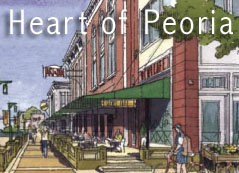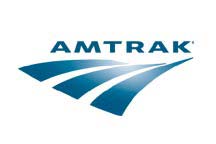The Journal Star has another editorial on the Kellar Branch today. I’m surprised it took them this long to write it, considering all their editorials on this issue follow the same boilerplate. Once again, it’s time to set the record straight:
Recall that Carver was the Kellar branch’s only customer, and that the city of Peoria built the company a $2 million extension so it could continue getting deliveries.
This is revisionist history. Peoria did not “buil[d] the company a $2 million extension.” The resolution which passed on May 15, 2001 stated explicitly the reason for extending the spur was “to retain long-term cost effective, direct rail service to Pioneer Industrial Park and future rail service to Growth Cell #2….” It was not just to benefit Carver Lumber, unless the council was lying about their reason for building it. (Insert cynicism here.)
It’s also worth noting that there were several other businesses on the Kellar Branch before the city started their attempt to de-rail it. So the fact that Carver is the “only” customer now is to the city’s shame. Is the Journal Star happy they’ve run these businesses out of town for the sake of a trail?
And the $2 million cost did not come out of Peoria’s coffers. Most of that was a grant, just like the $4 million in grants that the Park District wants to use to build the trail. The Journal Star likes to think of grants as free money when it comes to building a trail, but for rail service it’s seen as a liability. More hypocrisy. The city only spent $175,000 out of the capital improvement fund for the spur.
Carver’s number-crunching ought not interfere with the trail conversion. At this point, they are two separate issues. There must be a way to walk and chew gum – to help Carver and build the trail – at the same time.
They are not two separate issues. Getting Surface Transportation Board (STB) approval is part of the process precisely so that rail line owners can’t do what Peoria is trying to do: take a line out of service without any regard for the businesses using that line. The process is working the way it was intended.
If the city and Park District were really willing to “walk and chew gum,” they could have had this trail completed years ago — by putting it side-by-side with the Kellar Branch.
Does the STB think the Kellar branch would magically reopen overnight and, poof, Carver’s problem would be solved? Parts of the line are in disrepair. It cost $350,000 for the city of Peoria to rehab a just small swatch of track in Pioneer Park. Multiply that by 8 1/2 miles and you get an idea of the prohibitive price tag.
This is a red herring. First of all, the tracks should not be in disrepair, and if they are, then it was due to a breach in contract with DOT Rail (d/b/a Central Illinois Railway), and Peoria should take legal action against them to pay for the repairs.
According to the city’s April 27, 2004, contract with DOT Rail, the city is only responsible for “maintenance of roadways and street crossings (excluding rails, ties and signal devices on roadways and streets) under the jurisdiction of the city.”
DOT Rail, on the other hand, “shall assume the responsibility for all maintenance of tracks, crossing protection, and roadbed including weed, brush, snow and ice control thereon, all drainage control maintenance, and all weed and brush control on the remainder of the right-of-way, following the guidelines set forth by the Federal Railroad Administration (FRA).”
Granted, this particular contract expired 60 days after the western spur was completed, but the spur was completed in February, which means the contract expired in April, just last month. If there are tracks in need of repair, that means DOT Rail was in breach of contract. Of course, since they never made a single delivery over the Kellar Branch, they were in breach of contract the entire time that Carver Lumber had to haul their lumber via truck at tremendous expense.
The decision to close Kellar has been made.
No, Journal Star Editorial Board, the decision hasn’t been made. It’s up to the STB, and they’ve said it can’t be closed yet. The Journal Star’s statement is a bald-faced lie.
Serious money has been spent on an alternative. It would be crazy to tap local taxpayers for even more millions to have two competing branches – one of which is old and rickety and interrupts traffic at several major intersections. Service to Carver would probably be faster by rickshaw, on a bike path.
Again, taxpayers would not be tapped for anything if the Kellar Branch were reopened. In fact, Pioneer would probably still be interested in buying it, in which case, rather than costing the taxpayers, the City of Peoria could rake in over a half-million dollars instead!
Also, the branches wouldn’t be “competing” with each other. The UP has access to both ends of the Kellar Branch (sole access at the western spur and neutral access downtown via the TZPR). So this is another nonsense statement.
There’s talk of getting a short-haul operator to run cars over UP’s line. But these are logistical matters that can be sorted out without derailing the trail.
Sure. And there are just a few logistical matters with getting pigs to fly, too. By all accounts from every railroad worker and enthusiast I know or have read, there’s not a snowball’s chance in hell that UP is going to let a short-haul operator run cars over its mainline.
The level of Carver’s rail service is not a little “logistical matter.” It’s the difference between them staying in business in Peoria or either moving out of Peoria or going out of business. This is a business that has been in this area over 60 years. But it’s apparently just collateral damage to the Journal Star, the City of Peoria, and the Peoria Park District, who continue to fight for a hiking trail at any cost.

 “An important part of maintaining the traditional neighborhoods of Peoria has to do with recognizing, preserving, and, when necessary, reinforcing their historic character.”
“An important part of maintaining the traditional neighborhoods of Peoria has to do with recognizing, preserving, and, when necessary, reinforcing their historic character.” The
The